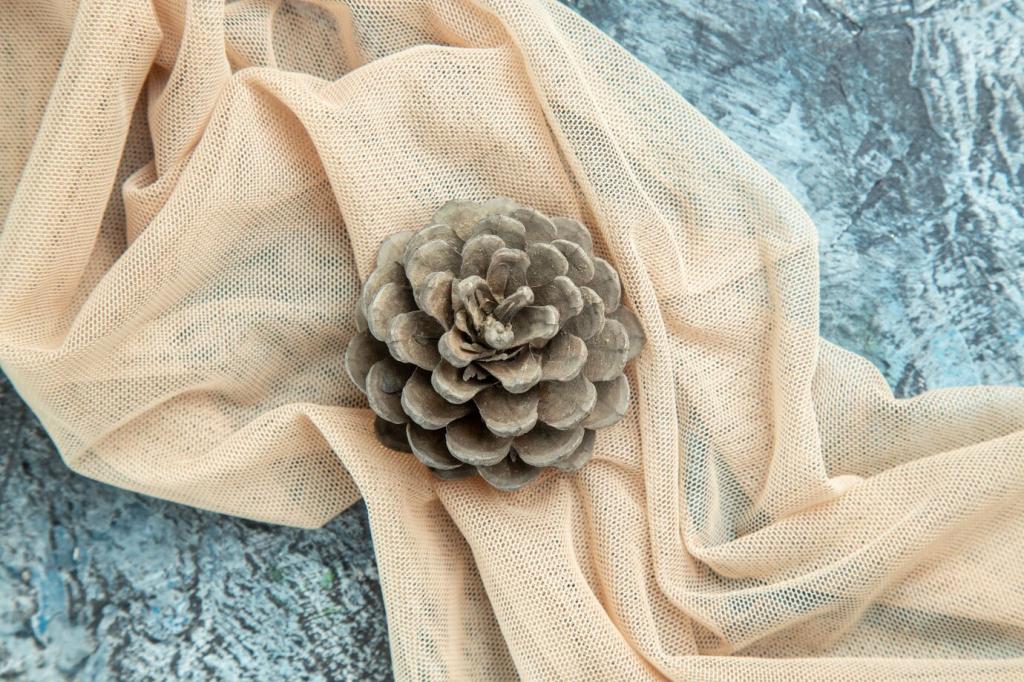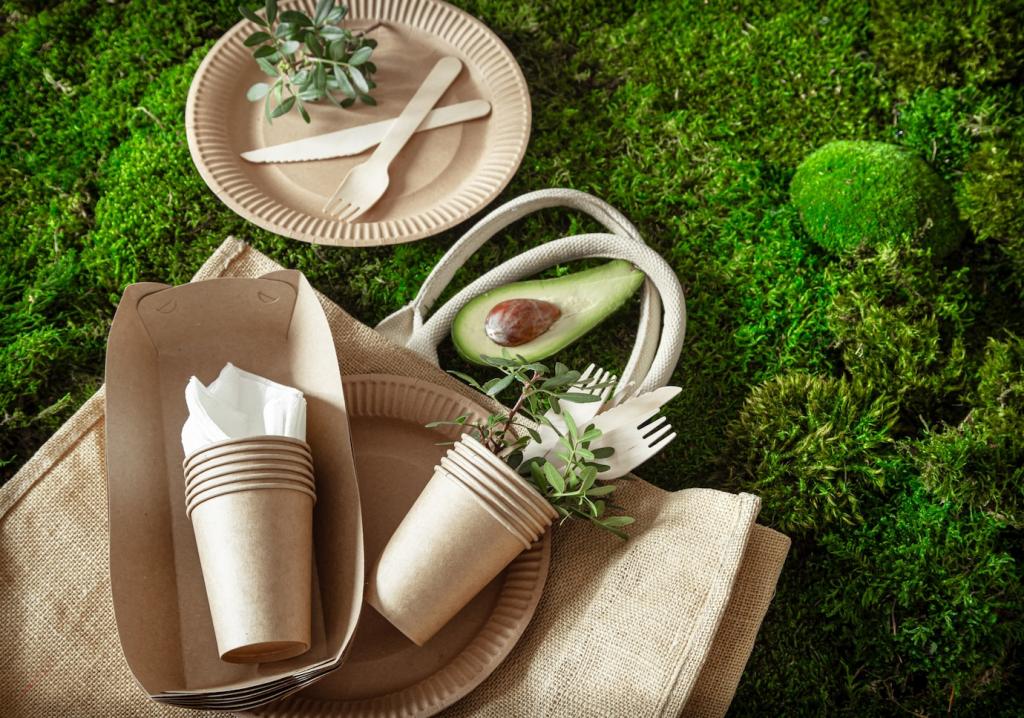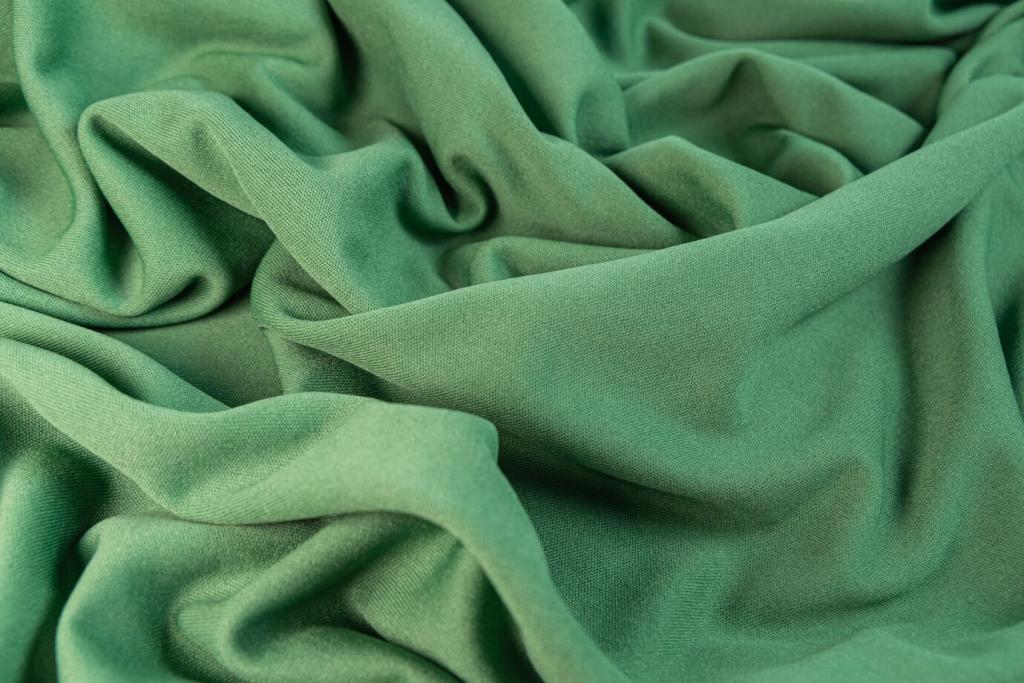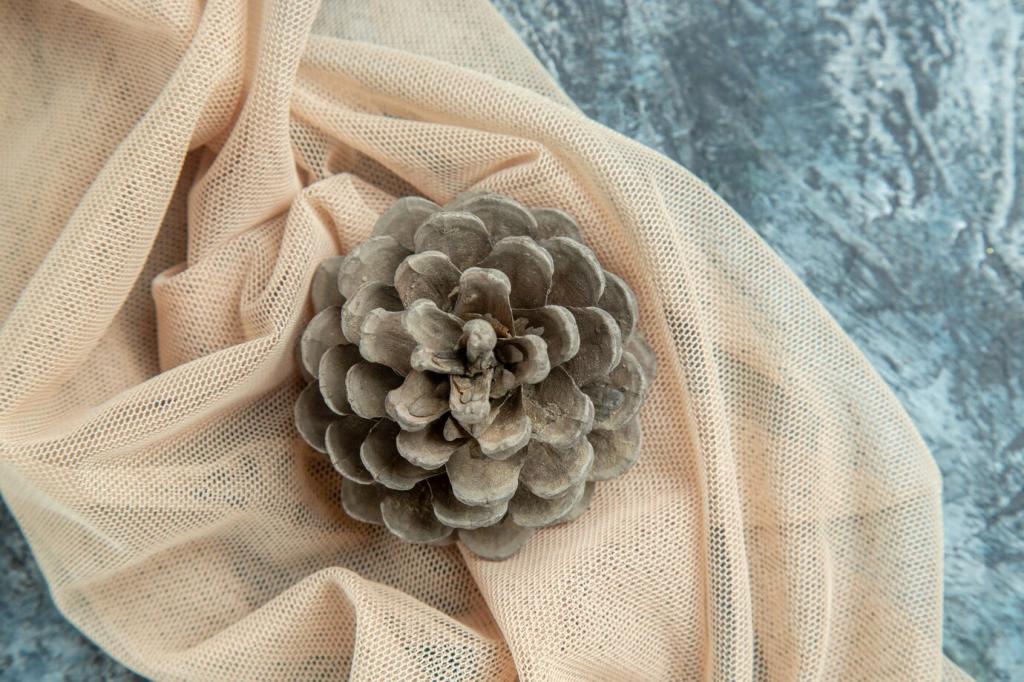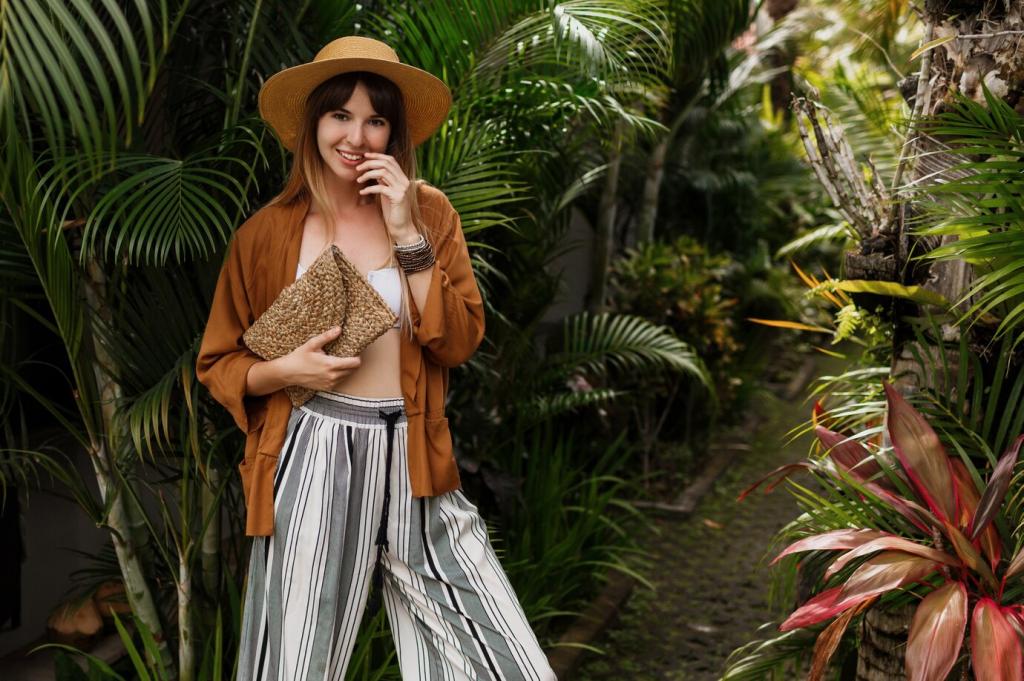Build Your Plant-Based Capsule
Seek high plant-fiber content, responsible certifications, and details on dyeing and finishing. Avoid heavy synthetic blends that hinder recycling and feel stuffy. Keep notes on brands that disclose mills and farms. What label terms still confuse you? Drop questions and we’ll compile a subscriber guide.
Build Your Plant-Based Capsule
Begin with an organic cotton tee, crisp linen shirt, hemp denim, a lyocell dress, and a lightweight jacket with plant-based fill like kapok. These pieces mix effortlessly for work and weekends. Which item would you add first? Share your picks and tag a friend to join our capsule challenge.


